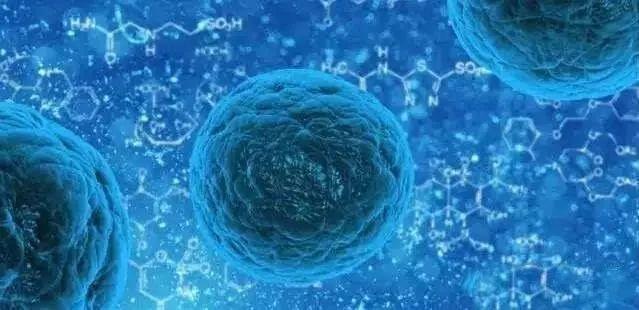Stem cells will become the most cutting-edge beauty and anti-aging technology?
- Normal Liver Cells Found to Promote Cancer Metastasis to the Liver
- Nearly 80% Complete Remission: Breakthrough in ADC Anti-Tumor Treatment
- Vaccination Against Common Diseases May Prevent Dementia!
- New Alzheimer’s Disease (AD) Diagnosis and Staging Criteria
- Breakthrough in Alzheimer’s Disease: New Nasal Spray Halts Cognitive Decline by Targeting Toxic Protein
- Can the Tap Water at the Paris Olympics be Drunk Directly?
Stem cells will become the most cutting-edge beauty and anti-aging technology?
Stem cells will become the most cutting-edge beauty and anti-aging technology? In addition to curing diseases, stem cells are also expected to become the most cutting-edge beauty and anti-aging technology!
Regenerative medicine in a broad sense is a comprehensive discipline that includes life science, material science, computer science, and engineering.
Not only do people who face injuries and deaths need stem cells, but people who are not sick and painless also need stem cells: whether you use Baidu or Google to search for the term “stem cells”, which type of disease is the most common treatment?
If I haven’t searched it, I can’t think of it. In fact, the most common thing is not disease, but beauty! Next are the femoral heads, nerves, and pancreas. It’s no wonder that the human love of beauty is endless, and it is understandable to beautify oneself while having enough food and clothing. It is foreseeable that stem cell beauty should be the most fashionable beauty treatment after sheep placenta.
In the long process of human evolution, the emergence of imagination was once a key step in our evolution. It can be said that it is precisely because of imagination that we humans become who we are today. In all human imaginations about self-capacity, there are no more than two kinds: one is “flying”; the other is “immortality”.

Regenerative medicine (regenerative medicine) is to study the body’s normal tissue characteristics and functions, wound repair and regeneration mechanisms, and cell differentiation mechanisms to find effective biological treatments and engineering methods to promote the body’s self-repair and regeneration, or to build new tissues Science with organs to improve or restore the function of damaged tissues and organs.
To put it bluntly, no matter whether you use biological or engineering methods, repair or rebuild broken or damaged tissues and organs, and let them work hard to serve us again. If you can’t live forever, you must live long, and if you can’t live forever, you must live long, and you must live well and quality.
Regenerative medicine in a broad sense is a comprehensive discipline that includes life science, material science, computer science, and engineering. Here we mainly introduce how to use stem cells to study the body’s normal tissue characteristics and functions, wound repair and regeneration mechanisms, and cell differentiation mechanisms, to find effective biological treatments to promote the body’s self-repair and regeneration, or construct new tissues and organs to maintain , Repair, regenerate or improve the function of damaged tissues and organs.
Stem cells have such a wide range of application prospects. They have great application value in tissue engineering, drug screening, and clinical stem cell transplantation to treat neurodegenerative diseases and hematological diseases. Therefore, stem cell research has developed rapidly in just a few years and has become the world The biomedical commanding heights that countries and large biomedical companies compete for.
Stem cell technology can culture stem cells in vitro and induce differentiation into various tissue stem cells for clinical needs. It can also construct human organs in vitro for replacement and repair treatment. Focus on research on therapeutic cloning technology, stem cell in vitro establishment and directional induction technology, in vitro construction of human structure and tissues and large-scale production technology, complex structure and tissue construction of human multiple stem cells and defect repair technology and biological manufacturing technology.
There is no doubt that stem cells are not only leading the profound changes in the existing clinical treatment model, but will also become one of the emerging high-tech industries with great potential in the 21st century. Because of this, governments, the scientific community, the business community and the general public have paid great attention to it, and an upsurge of international technological competition and industrialization competition has formed. Stem cell research products are gradually becoming a measure of the technological development of a country or region. One of the important signs of level and health.
It is undeniable that the development of science and technology has led to the development of the economy. In recent decades, it has been the fastest period of human social civilization development in history. From a certain perspective, we are living in the best era. With the development of economy and the improvement of people’s living standards, the biggest killer that threatened human health-“infectious diseases” is gradually decreasing, while diseases caused by cell, tissue and organ damage, disease and aging are relatively increasing. These diseases cannot be solved by traditional medicines and medical methods alone, and stem cell therapy will become the main method for treating such diseases.
In the United States, millions of people suffer from the loss or dysfunction of various tissues and organs every year, and 800 repairs are needed each year, costing 273.68 billion yuan annually. Statistics show that from 1997 to 2006, the number of new kidneys and livers per million people increased by 31% and 42%. In 2006, a total of 16,700 kidney transplants and 6,100 liver transplants were performed.
China is the most populous country in the world, and the number of people with tissue and organ defects or dysfunction caused by trauma, disease, genetics and aging is also the highest in the world: there are 5-10 million burns and scalds every year; There are 300,000 deaths from liver disease, half of which are due to liver cancer; 1.6 million new cases of diabetes occur each year; and 3-9 million of myocardial infarctions.
(sourceinternet, reference only)
Disclaimer of medicaltrend.org



